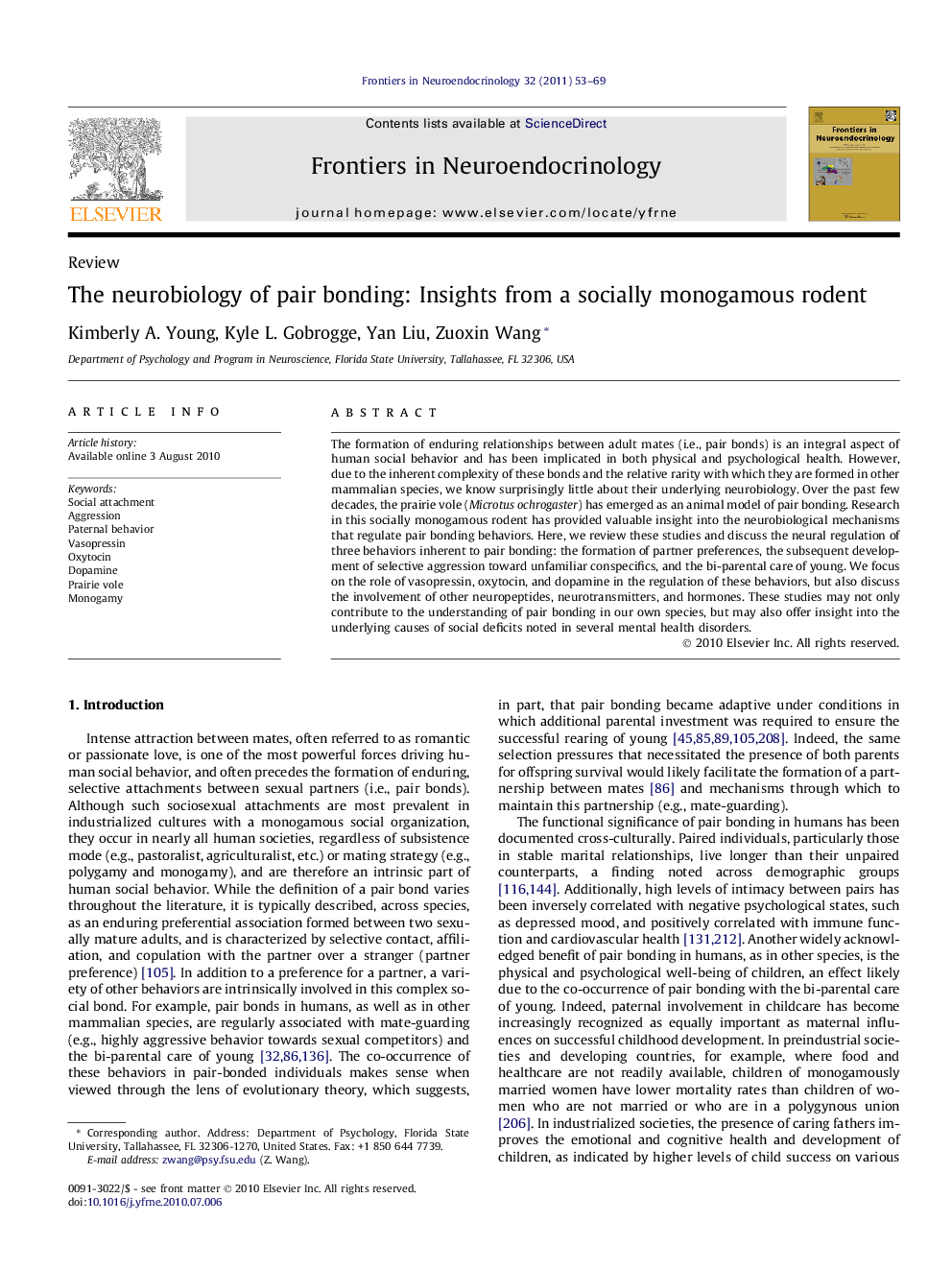| کد مقاله | کد نشریه | سال انتشار | مقاله انگلیسی | نسخه تمام متن |
|---|---|---|---|---|
| 2799454 | 1155984 | 2011 | 17 صفحه PDF | دانلود رایگان |

The formation of enduring relationships between adult mates (i.e., pair bonds) is an integral aspect of human social behavior and has been implicated in both physical and psychological health. However, due to the inherent complexity of these bonds and the relative rarity with which they are formed in other mammalian species, we know surprisingly little about their underlying neurobiology. Over the past few decades, the prairie vole (Microtus ochrogaster) has emerged as an animal model of pair bonding. Research in this socially monogamous rodent has provided valuable insight into the neurobiological mechanisms that regulate pair bonding behaviors. Here, we review these studies and discuss the neural regulation of three behaviors inherent to pair bonding: the formation of partner preferences, the subsequent development of selective aggression toward unfamiliar conspecifics, and the bi-parental care of young. We focus on the role of vasopressin, oxytocin, and dopamine in the regulation of these behaviors, but also discuss the involvement of other neuropeptides, neurotransmitters, and hormones. These studies may not only contribute to the understanding of pair bonding in our own species, but may also offer insight into the underlying causes of social deficits noted in several mental health disorders.
Journal: Frontiers in Neuroendocrinology - Volume 32, Issue 1, January 2011, Pages 53–69